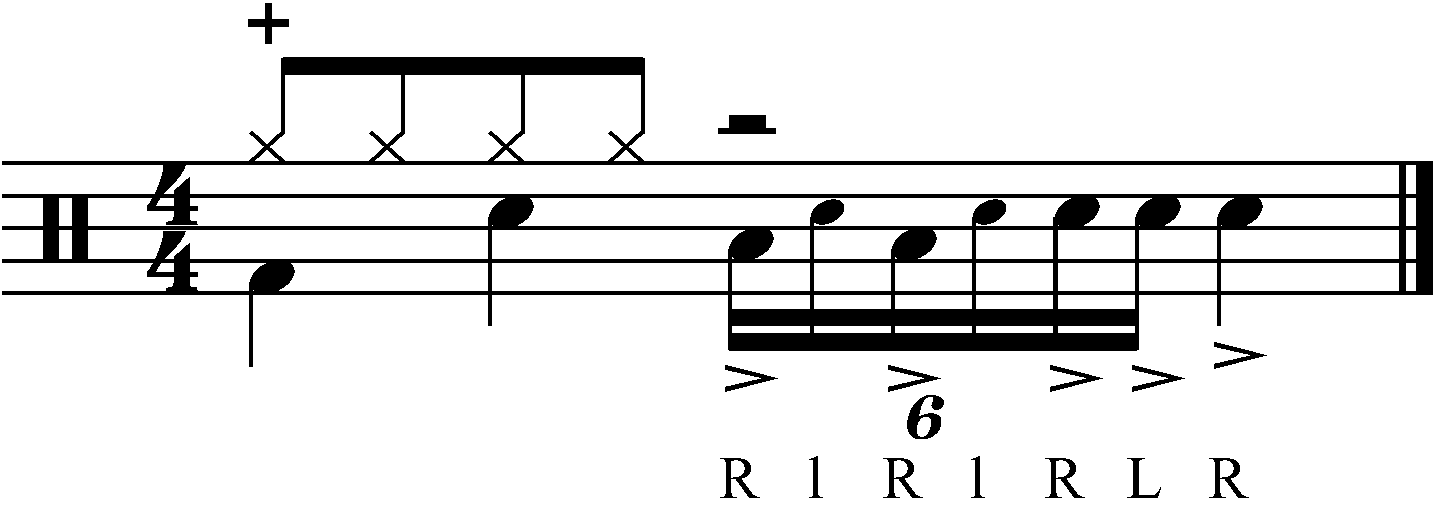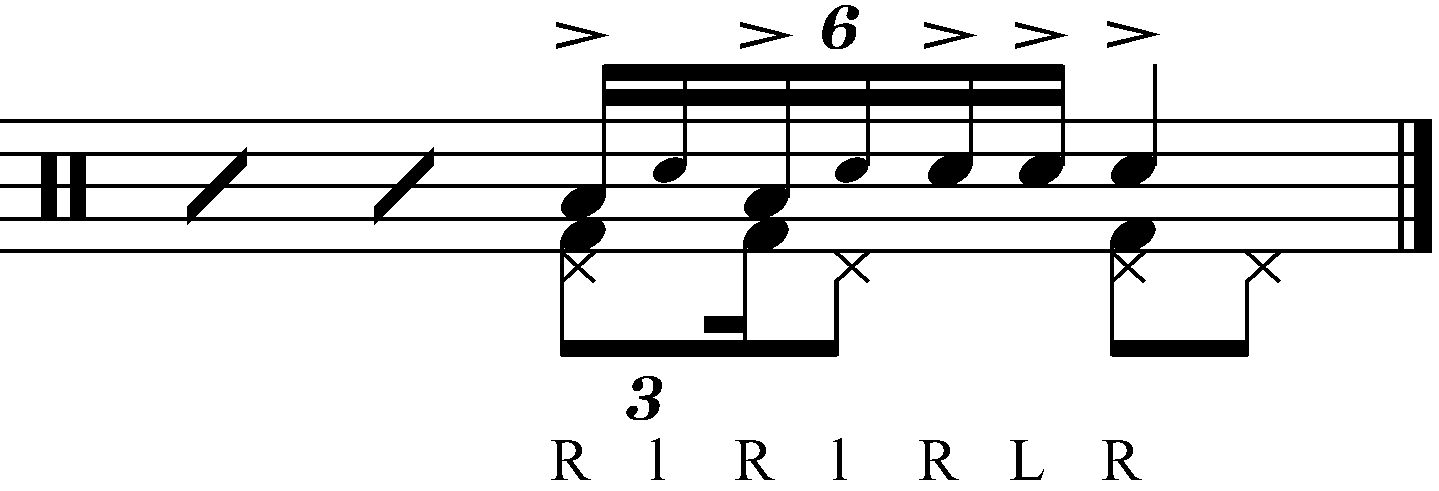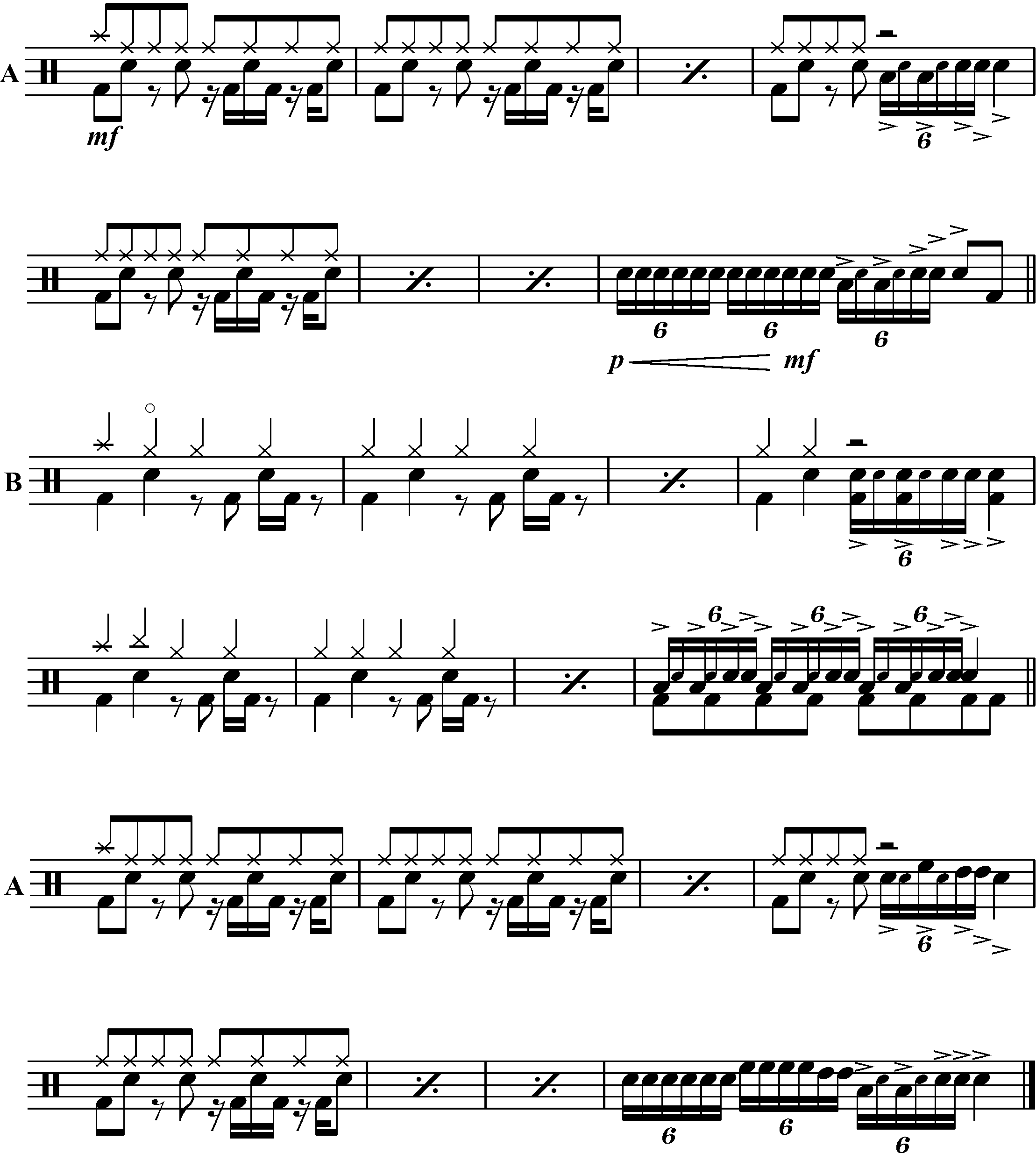The fills in this lesson are all based on a Single Stroke 7. There will be combinations of accents, feet and orchestrations so it will be very beneficial to work through our Single Stroke 7 lesson series before starting work on this fill. The orchestration used in this fill is very similar to that used in This Double Paradiddle Fill.
One of the cool things about a single stroke 7 is that it is made up of a quick burst of notes followed by a gap. This short moment of silence creates a really nice contrast and works particularly well in fast feeling parts.
First you will be given the basic fill. You will then be given ideas for combining with groove, ideas for variation and finally an example piece.
Lesson Contents
Single Stroke 7 Fill 1
This first fill is half a bar long and makes use of accents and ghost notes. It looks like this:
Fill 1

The smaller notes that you can see in this fill (first used on the second note in) are Ghost Notes, the bracket has been removed to prevent the notation getting too cluttered. The '>' sign above some notes is an Accent.
TASK
- Spend time getting this fill up to a tempo of at least 90bpm.
Adding Groove
Now fill up the rest of the bar up with groove. It doesn't matter what groove you use as long as it's only half a bars worth. Below are a couple of examples.
Grooved Version 1

Grooved Version 2

Grooved Version 3
A double time version

TASK
- Spend time getting these patterns up to a tempo of at least 90bpm.
Ideas For Adding Feet
Listed below are some ideas for adding feet to the fill. The groove has been excluded again in these examples, create your own patterns to complete the bar.
Foot Variation 1
Here you are using crotchets. As well as adding an extra layer of sound to the fill this is also a great way to keep time. Hi Hats have been used in the written example but try using the Kick also.

Foot Variation 2
We have a similar idea here but using eighth notes instead. Mix up the orchestration, constant kicks or constant hi hats are a very easy and common version. Adding the extra eighth note at the end afte the quarter note snare hit helps bring the next bar back in time, particularly when you are playing at slower tempos.

Foot Variation 3
In this example you are highlighting some of the accents with a kick drum.

Foot Variation 4
Finally take the same pattern as above and count either eighth or quarter notes on the left foot. Eighth notes are shown in the notation below.

TASK
- Spend time getting these patterns up to a tempo of at least 90bpm.
Extending To A Full Bar
In these fills the last half of the bar will be the original fill and the first half turns it into a full bar fill using various ideas. Three versions of this idea are listed below.
Full Bar Variation 1
Here you are starting with a set of eighth notes decorated with a set of sixteenths. The idea here is to start of slow to make the quick burst of sextuplets more dramatic.

Full Bar Variation 2
In this fill you play the sextuplets from the single stroke 7 three times before hitting the quarter note. Technically this could be described as a 19 stroke roll.

Full Bar Variation 3
For this fill you start by playing an accented 16th note snare pattern then break in to the original fill.

TASK
- Spend time getting these patterns up to a tempo of at least 90bpm.
Example Piece
The short piece below includes various versions of the fill combined with different grooves. The sticking has been excluded in each fill so remember to use the single stroke 7.


